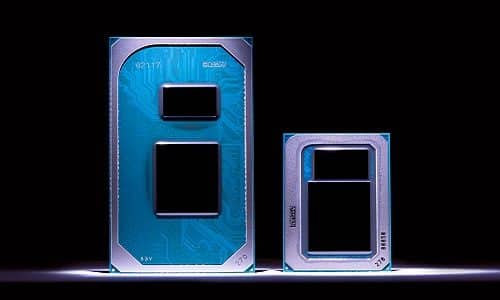These processors allow quick and better response to complex modern edge applications present in various IoT domains

At the recently concluded Intel Industrial Summit 2020 that focused on IIoT ecosystem’s challenges while expanding the possibility for future autonomous operations, Intel announced new enhanced internet of things (IoT) capabilities using 11th Gen Intel® Core™ processors, Intel Atom® x6000E series, and Intel® Pentium® and Celeron® N and J series.
The innovations delivered with 11th Gen Intel Core processors, Intel Atom x6000E series and Intel Pentium and Celeron N and J series processors are a response to edge complexity challenges felt across the IoT industry and bring new artificial intelligence (AI), security, functional safety and real-time capabilities to edge customers.
By combining a common and seamless developer experience with software and tools like the Edge Software Hub’s Edge Insights for Industrial and the Intel Distribution of OpenVINO™ toolkit, Intel offers faster time-to-market and delivers more powerful outcomes with optimised, containerised packages to enable sensing, vision, automation and other transformative edge applications. For example, when combined with 11th Gen’s SuperFin technology process improvements and other enhancements, OpenVINO running on an 11th Gen Core i5 processor delivers an AI performance that has twice faster inferences per second than an 8th Gen Intel Core i5-8500 processor when running.
About 11th Gen Core Processors
The newly announced 11th Gen Core processors leverage Intel’s new SuperFin process technology and provide optimised power efficiency with better performance and responsiveness while running at significantly higher frequencies (as compared to the previous generation).
The processors deliver an increased 23 per cent in single-thread performance, a 19 per cent gain in multithread performance and up to a 2.95x performance gain in graphics gen on gen. New dual-video decode boxes allow the processor to operate upon 40 simultaneous video streams at 1080p 30 frames per second and output up to four channels of 4K or two channels of 8K video. AI-inferencing algorithms can run on up to 96 graphic execution units (INT8) or run on the CPU with vector neural network instructions (VNNI) built-in.
With Intel Time Coordinated Computing (Intel TCC Technology) and time-sensitive networking (TSN) technologies, 11th Gen processors enable real-time computing demands while delivering deterministic performance across a variety of use cases such as:
- Industrial sector: Mission-critical control systems (PLC, robotics, etc.), industrial PCs and human-machine interfaces.
- Retail, banking and hospitality: Intelligent, immersive digital signage, interactive kiosks and automated checkout.
- Healthcare: Next-generation medical imaging devices with high-resolution displays and AI-powered diagnostics.
- Smart city: Smart network video recorders with onboard AI inferencing and analytics.
All this makes the enhanced processor suitable for IoT applications that require high-speed processing, computer vision and low-latency deterministic computing.
About Intel Atom x6000E Series and Intel Pentium and Celeron N and J Series Processors
These processors deliver:
- Enhanced real-time performance and efficiency
- Up to 2 times better 3D graphics
- A dedicated real-time offload engine
- Intel® Programmable Services Engine, which supports out-of-band and in-band remote device management
- Enhanced I/O and storage options
- Integrated 2.5GbE time-sensitive networking.
They can support 4Kp60 resolution on up to three simultaneous displays, meet strict functional safety requirements with the Intel® Safety Island and include built-in hardware-based security. These processors have a variety of use cases, including:
- Industrial: Real-time control systems and devices that meet functional safety requirements for industrial robots and chemical, oil field and energy grid-control applications.
- Transportation: Vehicle controls, fleet monitoring and management systems that synchronize inputs from multiple sensors and direct actions in semiautonomous buses, trains, ships and trucks.
- Healthcare: Medical displays, carts, service robots, entry-level ultrasound machines, gateways and kiosks that require AI and computer vision with reduced energy consumption.
- Retail and hospitality: Fixed and mobile point-of-sale systems for retail and quick-service restaurant with high-resolution graphics.
“By 2023, up to 70 per cent of all enterprises will process data at the edge. 11th Gen Intel Core processors, Intel Atom x6000E series and Intel Pentium and Celeron N and J series processors represent our most significant step forward yet in enhancements for IoT, bringing features that address our customers’ current needs, while setting the foundation for capabilities with advancements in AI and 5G,” said John Healy, vice president of the Internet of Things Group and general manager of Platform Management and Customer Engineering at Intel.
The company aims to provide robust solutions for the US$ 65 billion edge silicon market opportunity by 2024.







